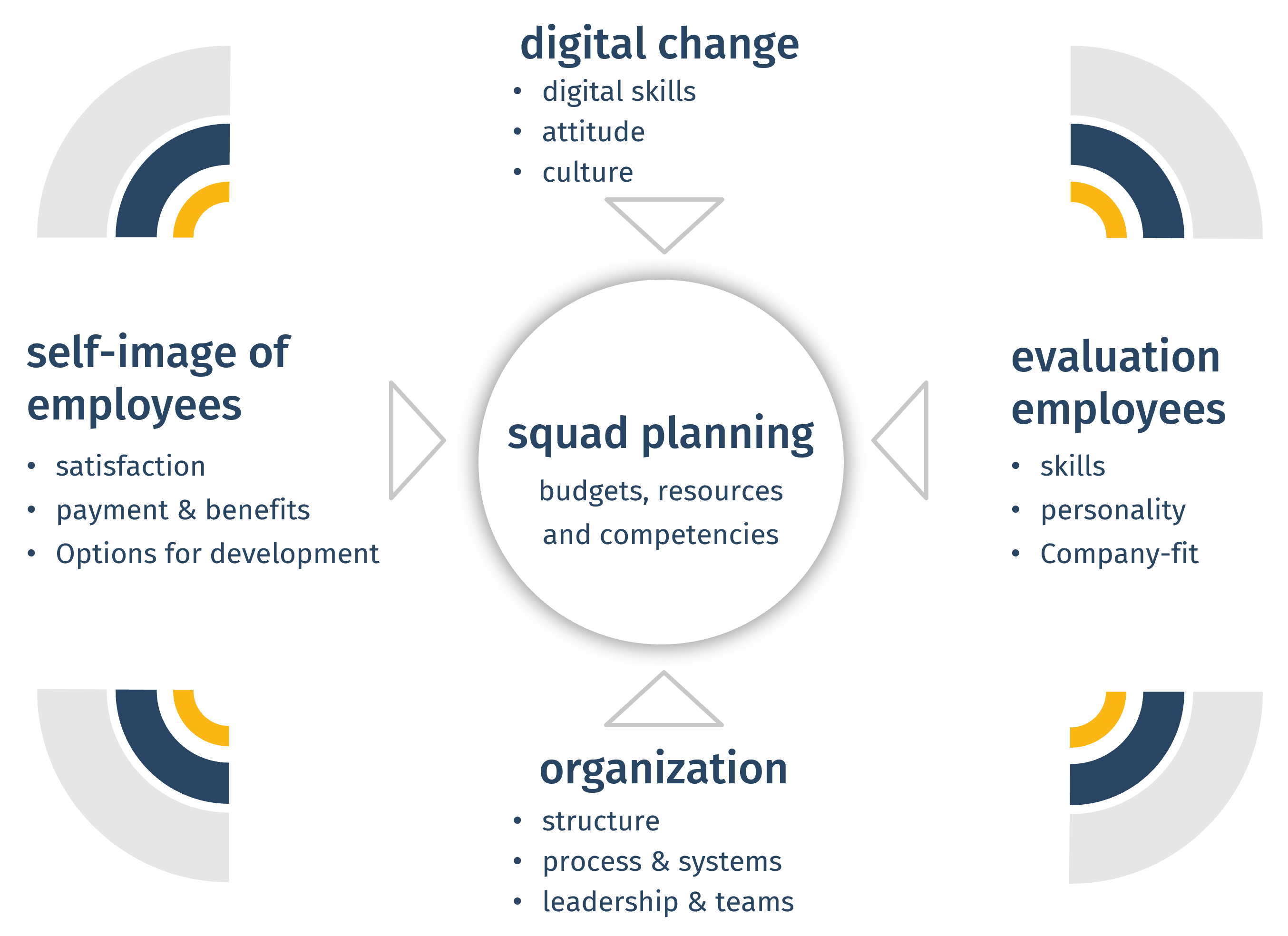Squad planning for companies - a plea for more strategy in personnel planning
In sports, squad planning is at the heart of a team's development. Transfers, training and tactics determine athletic performance. But the organization of a club also depends on the performance of its team. How can squad planning be carried out as a goal-oriented selection and development process for employees, and what benefits does it bring?
Successful clubs are practiced in planning and developing their teams for the long term with an eye on sporting goals, the playing system and budgets. The requirements for each position are known and the players they needed are signed, trained and coached accordingly.
But who is the squad planner for an enterprise? How can the planned business development be translated into a suitable organization? And what role does digital transformation play as an additional stress test for HR planning?
For this bridging between strategy and human resources, we have developed the concept of squad planning as an instrument for strategic human resources planning. Here, we apply several methods and analyses to determine future personnel requirements for our customers. In doing so, we keep an eye on the required resources and competencies as well as the available budgets.
to be elementaryfor successful long-term management planning. Starting with an analysis of the current workforce in terms of quality and quantity, the planning of future scenarios (e.g., league membership, business models, market expansion, demographics, etc.) is a common approach. This can then be used as the basis for analysing future personnel requirements.
In a multi-stage process, different modules can be combined as needed to identify the potential gaps in workforce planning and organizational development with regard to the company's goals. In addition to a lack of resources or know-how, the digital skills and agility of employees now also play an important role. Likewise, the attractiveness of the company plays is increasingly important for a good market position, e.g., in the war for talents .
Gap analyses are used to identify individual areas of action and serve as a basis for the work of the HR and executives. This makes it possible, for example, to derive concrete development plans and goals for existing employees and to recruit suitable new employees with sufficient forerun notice. Just like in sports: transfers, training and tactics.
The positive effects from good squad planning are manifold, including:
1.higher productivity
2.higher employee satisfaction and loyalty
3.planned fluctuation and targeted reinforcement
4.market-driven payment
5.positive employer branding and higher attractiveness as an employer
6.lower recruitment costs
7.lower overall costs for personnel and workplaces
The main goal of workforce planning is to have the right people available at the right time and deployed to the right jobs. Workforce planning is a complex task that requires accurate data collection and analysis. When done well, workforce planning is a valuable tool that can lead to an important competitive advantage.
Feel free to contact us for more information about the different modules and methods of our squad planning or for a first look into your company.
Authors: Dr. Marcus Hochhaus (hochhaus@sportheads.de) and Marc Mayer-Vorfelder (mayer-vorfelder@sportheads.de), Managing Partners of the personnel and strategy consultancy SPORTHEADS from Munich and Cologne.


